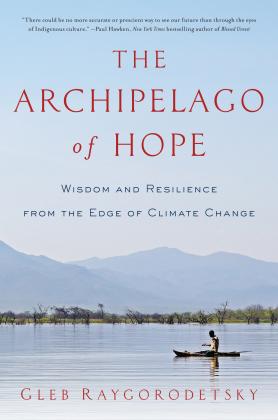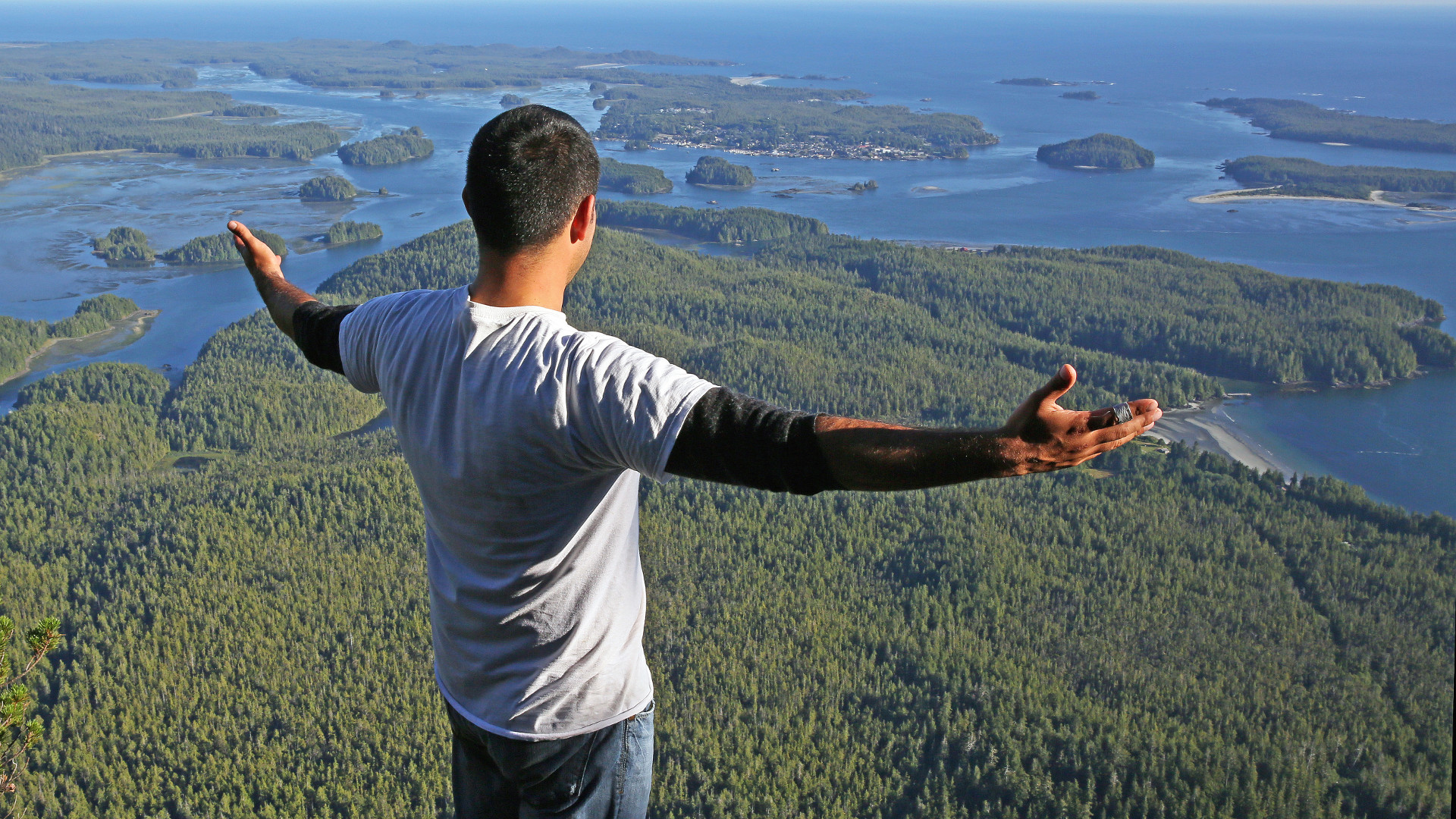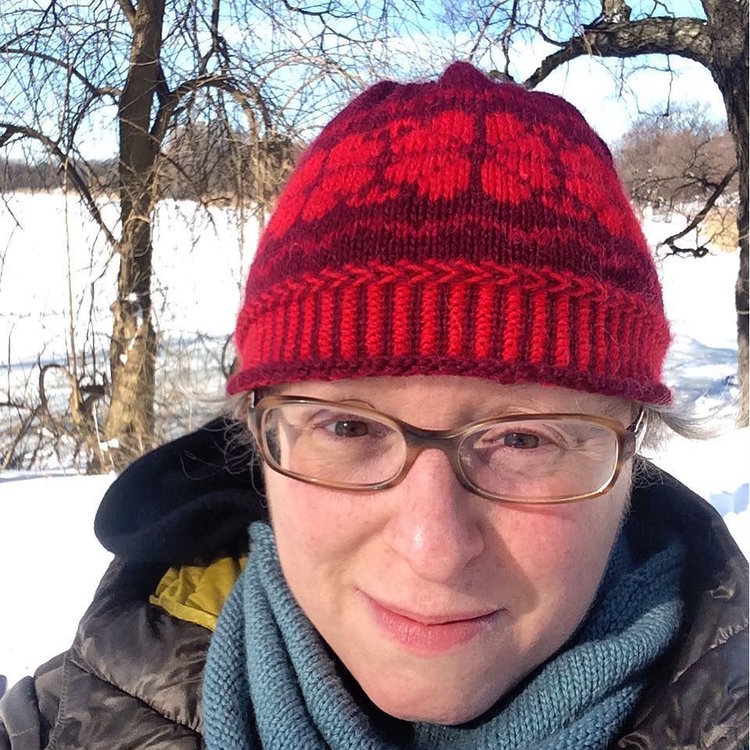For two decades Canadian conservation biologist Gleb Raygorodetsky has worked on environmental projects with indigenous peoples from the tropics to the Arctic, in the Americas, Europe, Russia and the Pacific. The resilience of these communities — which, despite centuries of political, social and ecological upheavals, have maintained their deep, ancient relationships with their historic lands and waters — convinced him that their knowledge offers valuable guidance to the world for dealing with the greatest environmental crisis in human history: climate change.
“The more I learned from the science, the more I felt there’s this hole that is not being filled by science,” says Raygorodetsky, “the sort of intimate, spiritual relationship with the land, with the planet, that science lacks. So I gravitated toward that more holistic way of relating to the land, the animals and our place in this planet.”
 In his new book Archipelago of Hope: Wisdom and Resilience from the Edge of Climate Change (Pegasus Books, $28.95), published this week, Raygorodetsky recounts how indigenous communities living on the front lines of climate change have begun to collaborate with scientists and nongovernmental organizations to document emerging environmental conditions, inform those studies with traditional knowledge, and combine the two toward their own physical and cultural survival. He also describes how activists and some indigenous communities are successfully fighting back when governments and corporations ignore indigenous needs and rights in their pursuit of economic ventures. “With indigenous groups there’s a natural law by which the world works. It’s not something that we invented,” he says. “We have to breathe. We have to have water, air, sunlight. Otherwise we don’t survive, as individuals or as a species.”
In his new book Archipelago of Hope: Wisdom and Resilience from the Edge of Climate Change (Pegasus Books, $28.95), published this week, Raygorodetsky recounts how indigenous communities living on the front lines of climate change have begun to collaborate with scientists and nongovernmental organizations to document emerging environmental conditions, inform those studies with traditional knowledge, and combine the two toward their own physical and cultural survival. He also describes how activists and some indigenous communities are successfully fighting back when governments and corporations ignore indigenous needs and rights in their pursuit of economic ventures. “With indigenous groups there’s a natural law by which the world works. It’s not something that we invented,” he says. “We have to breathe. We have to have water, air, sunlight. Otherwise we don’t survive, as individuals or as a species.”
There has been a longstanding disdain for indigenous environmental knowledge among many scientists, perhaps because that knowledge is bound up with their spiritual beliefs and practices, which goes against the grain of modern science’s foundation in the western Enlightenment. Is that attitude changing?
I think there’s more of a realization that if we are truly trying to tackle the issues of today — climate change, industrial development, quality of life — then we need to look at the experiences and best practices of people who have actually be around the block for much longer than our modern civilization without destroying our home.
There are a number of fields that try to use different lenses of interpreting the world around us, fields like biocultural diversity and resilience thinking. Ecology is all about the interdependence of different processes and elements of the web of life. At the metaphysical level, more thinking is going into parallels between what quantum physics and cosmology tell us about how the world works, and how indigenous worldviews interpret how the world works.
A lot of it also has to do with power, and who is telling the story. Science is complaining that they’re not at the heart of decision-making. Well, they can certainly understand how indigenous peoples feel, because they haven’t been at the decision-making table for centuries.
Why are indigenous views and practices a source of hope when it comes to dealing with climate change?
We depend on biodiversity, or as we call it “ecosystem services.” Eighty percent of the world’s remaining biodiversity is on the territories of indigenous peoples, and most of them have a clear understanding of what’s happening on that land or that sea, and what needs to be done to protect it. That’s reassuring to me. If the majority of our collective wealth and natural capital would be in the hands of corporations, then I’d be worried.
The hope also comes from the fact that they’ve been dealt so many blows through social and environmental change, and despite that there’s resilience in how they see themselves on the land now, and how they think about the future. They’re not trapped in the past but rooted in that generations-long relationship with the land, and the responsibility for maintaining it for future generations.
What’s an example of that from the communities that you write about in the book?
Look at the Karen people of Hin Lad Nai, in northern Thailand. They’ve been displaced. Their traditional forests have been clear-cut. But they manage to cling to whatever is left, and continue to practice their traditional agriculture. Now that land is restored to a point where the government sees it as an example of good stewardship and wants to establish a park in that area, which is obviously not what communities would really appreciate, because they would rather see strengthening of their rights and how they look after their traditional forest.
Why wouldn’t a park be the best solution for protecting these northern Thailand forests and the Hin Lad Nai?
In that particular case, a park would be setting aside area where it “conserves biodiversity” within the perimeter of the park, and most of the traditional activities, like slash-and-burn agriculture — something that actually enriches biodiversity of the forest and sustains those communities — would be prohibited. Which would change the dynamic of how the forest grows, how animals disperse through the territory, and obviously communities are not going to be able to live on that traditional territory and would have to move out to urban centers, where their cultures would eventually dissipate.
A lot of it is about, “yes, if you want to establish a park, let us be at the decision-making table. Because it’s our territory, let us decide about what’s going to happen where, and not the other way around.”
This is not unique to developing countries. It’s happening all over Canada, and all over the States. And to take it back to climate change, one of the reasons for intensifying fires throughout North America is changes to the fire regime, because those forests and shrublands were traditionally managed with fire. Something that’s been stopped and suppressed under the imposed management regime.
What indigenous peoples want is to find a way to restore some of those practices. But it’s impossible to do if you are not really in charge of what’s happening on your traditional territory.
It struck me how every indigenous community you write about is struggling to survive and thrive, even in countries that recognize their rights. In Ecuador the government treated the Sapara respectfully. But as soon as it became more economically feasible for oil companies to get at the oil under their forest land, that fight began again.
In Ecuador, yes, they are recognized. But they have to fight off the government and corporations having their own agenda to get access to their territory. Those fights about the rights to the land and the resources are an ongoing battle. But without it, it’d just be a green light for development to go in and do whatever they want. Even in countries that recognize indigenous rights and have land claims settled with indigenous groups, there’s still surface versus subsurface rights, providing access.
Even the REDD program, “Reduced Emissions from Deforestation and Forest Degradation,” a climate-change mitigation effort that many international organizations and governments promote, amounts to projects that actually do more harm than good at the local level. Because the decision-makers, the policymakers and even the researchers are looking just at a small piece of the puzzle, compared to how indigenous peoples look at that relationship with the forest.
Right now, with climate change mitigation discussions, the focus is on getting CO2 out of the atmosphere, minimizing greenhouse gas emissions, rather than looking at the whole problem holistically. If you look at the forest just as a carbon bank, then we’re missing multiple other dimensions. That’s something that indigenous peoples have been trying to tell us on a variety of issues, but particularly on climate change, from the very beginning. A lot of mitigation projects that are being proposed or developed have severe consequences that undermine communities’ abilities to adapt.
Like what?
Like hydroelectric projects. We are supposedly switching from a carbon-based economy to a renewable economy. But in the process, we’re changing water flow regimes in watersheds such that people downstream cannot have access to their traditional hunting and fishing territories.
The same thing with reforestation. “We’re gonna fly over this deforested area and just bomb it with seed pellets, and in 10 years it’s gonna be a lush green forest. Isn’t that great?” Well it isn’t, because you’re going to end up with a really simplified forest structure: one age class, little biodiversity.
From your perspective as a scientist informed by indigenous world-views, why aren’t global and regional pacts to deal with climate change more effective?
The problem with all this stuff, from my ill-informed perch, is that the solutions are coming from the same cesspool of ideas as everything else, based on the same economic model. We think that the economy can just continue to grow.
Even when we talk about renewables, we conveniently look away from where the minerals are coming from, where all the technology to generate that renewable energy is coming from, and what the impact of that is in local communities.
Why is it happening? Again, because decision-making is disconnected from the places where those decisions are having an impact, and the people who have to live with the consequences of those decisions.
Globally more people live in cities now than in the countryside, and that trend is expected to continue for decades to come. Won’t that undercut whatever impact a more holistic approach to climate change could have?
Except that trend cannot exist without the countryside. Cities without support of everything around them would just collapse. One of the lessons from resilience thinking is that for the society to be resilient, you need to have diversity. Diversity is undermined by a design where everything is concentrated in one place.
At a more conceptual level, it doesn’t matter whether you’re in an urban or rural environment. You’re still dependent on the web of life, and being cognizant of those relationships and treating them in a respectful way. Farm-to-table, community markets, understanding where your food comes from and the relationship between food and well-being, all that stuff is also informed by some of the concepts that resonate with indigenous worldviews. The relationship between the prey and the hunter, and the gatherer and plants, it’s all in there.
There is value in looking at institutions that have regulated our interaction with the environment for millennia, without undermining that balance, and learning from it.
These are the messages that are coming from indigenous communities. Without them we wouldn’t even be talking about these implications. So that’s another source of hope.
© 2017 Emily Gertz. All rights reserved.



1 thought on “How the World’s Oldest Wisdom Is Informing Modern Responses to Climate Change”
Comments are closed.